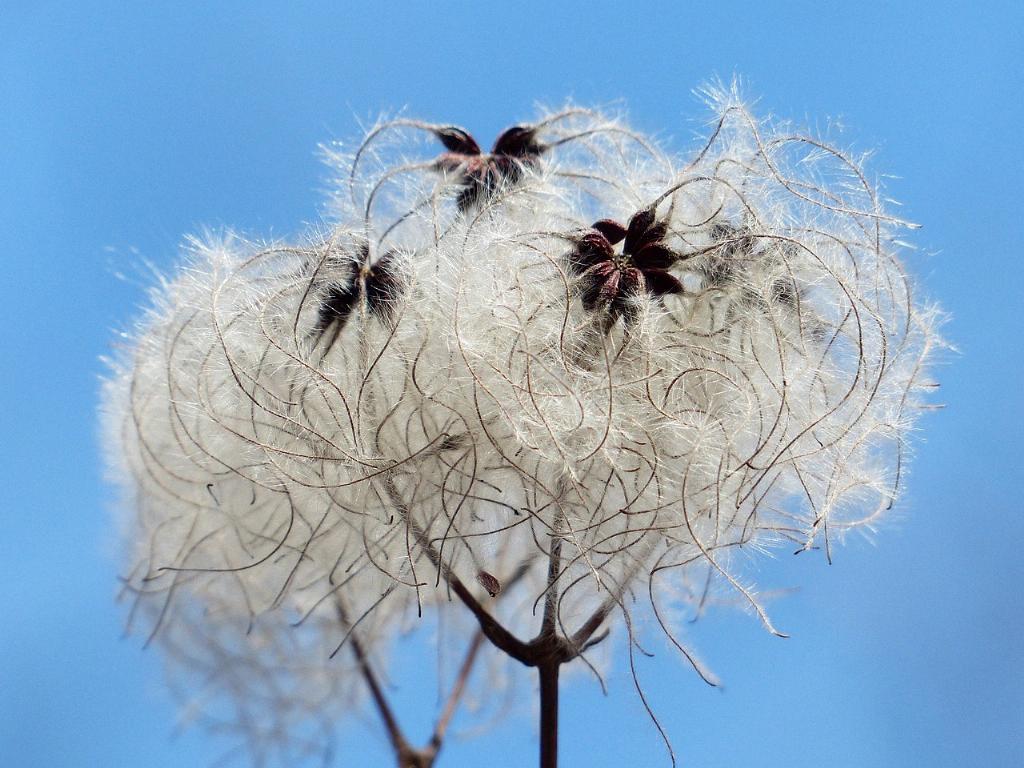When summer fades and the days grow shorter, gardens can start to lose their luster. But there’s a vine that refuses to bow to the dwindling sun – the autumn clematis. This vigorous, climbing plant brings a burst of late-season blooms when most flowers are starting to retire for the year. Not only do these star-shaped blossoms add a splash of striking white against the autumnal backdrop, but they also emit a sweet, heady fragrance that can liven up any garden space. Known scientifically as Clematis terniflora, this plant is noted for its adaptability and hardiness, making it a popular choice amongst green thumbs looking for reliable fall color.
Choosing the Right Spot: Ideal Conditions for Planting Autumn Clematis
Getting the best out of your autumn clematis starts with selecting the perfect spot. These climbers love the sun but their roots crave the coolness of the shade – it’s a bit of a balancing act. Ideally, plant them in a location where the soil is well-draining and rich in organic matter. Provide some form of support, like a trellis or fence, for the tendrils to cling to and climb. Access to at least six hours of sun a day ensures optimal blooming, but remember, the base of the plant should be kept out of the hot sun and blanketed with mulch or companion plants to keep it cool.
Gardening Tips: How to Plant and Care for Autumn Clematis
When you’ve got your ideal spot, planting autumn clematis is straightforward. Dig a hole deep and wide enough to accommodate the root ball, place your plant, and fill with a mix of compost and soil, ensuring that the crown is about two inches below the soil surface. Regular watering helps the plant establish, but once settled, clematis is relatively drought-tolerant. However, for the lush, abundant blooms, a weekly watering schedule during dry spells and a balanced, slow-release fertilizer in early spring will do wonders. Additionally, keep an eye on the moisture levels in the soil, as clematis doesn’t fare well in overly wet or dry conditions.
Pruning Practices: Ensuring the Health and Beauty of Your Autumn Clematis
Pruning might seem daunting, but it’s key for maintaining the vitality and appearance of your autumn clematis. This plant falls into pruning group three, which means it flowers on the current year’s growth and should be cut back hard at the end of winter or start of spring. This encourages strong new growth and a better floral display. Simply cut back the stems to a strong set of buds, about a foot above the ground. This might feel like a drastic measure, but it ensures your plant remains both manageable and beautiful.
Common Challenges: Dealing with Pests and Diseases in Autumn Clematis
No plant is without its challenges, and the autumn clematis is no exception. Keep an eye out for signs of wilt or clematis slime flux. Both can be combated by proper planting and care techniques, particularly ensuring good air circulation and avoiding waterlogged conditions. Pest-wise, watch for aphids and spider mites, especially during the warmer months. A blast of water from the hose or an application of insecticidal soap usually keeps these critters at bay.
Design Ideas: Incorporating Autumn Clematis in Your Garden
Autumn clematis is incredibly versatile in garden design. Its ability to climb eagerly makes it perfect for softening hardscapes such as walls or fences. Draping over a pergola or arbor creates a stunning, fragrant canopy. For a more naturalistic approach, allow it to scramble over shrubs or small trees, adding vertical interest. Its rapid growth and dense foliage also make it ideal for creating privacy screens or green walls in areas where you’d like a bit of seclusion or to block unsightly views.
Autumn Clematis Companions: Best Plants to Grow Alongside
When thinking about companions for your autumn clematis, consider plants that share similar cultural needs. Tall, sturdy perennials like coneflowers or black-eyed Susans provide visual balance and contrast, while late-flowering shrubs like hydrangeas offer a backdrop that makes the white clematis blooms pop. Groundcovers can also be useful to keep the clematis roots cool – think low-growing sedums or even hostas depending on your sun exposure.
Preserving Beauty: Preparing Autumn Clematis for the Winter Months
As the growing season winds down, it’s important to prepare your clematis for winter. This climber is relatively hardy but benefits from some post-frost cleanup. Remove any dead or diseased foliage to prevent overwintering pests and diseases, and apply a fresh layer of mulch to protect the roots from freezing temperatures. Avoid high-nitrogen fertilizers late in the season as they can encourage growth that’s too tender to face the winter cold reliably.
Celebrating the Colors: The Visual Appeal of Autumn Clematis Through the Seasons
One of the most delightful aspects of the autumn clematis is how it transitions through the seasons. In spring, fresh, green shoots begin to emerge, hinting at the explosion of growth to come. By mid to late summer, the plant is a dense mass of deep green foliage, setting the stage for the floral spectacle of early fall. The profusion of starry white blooms not only brightens the dwindling days of autumn but also provides a critical late-season pollen source for bees. As the blooms fade, the silvery seed heads offer ornamental interest well into winter, maintaining the garden’s appeal year-round.

